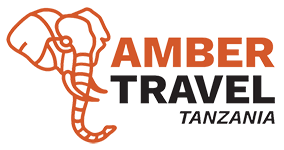Climb Mount Kilimanjaro
Our experienced mountain guides will ensure that your climb to the roof of Africa is as safe and easy as possible. Our guides have an intimate knowledge of the various routes and the climate conditions, allowing them to predict changes and avoid accidents along the way.
We ensure all of our guides are 100% physically and mentally prepared so that they can react quickly to counter potentially dangerous situations or to assist climbers. In addition to all of this, we use only the best professional quality mountain climbing equipment, provide you with in-depth pre-trip information, and make sure you’re fed with plenty of delicious food on the climb.
About Mount Kilimanjaro
Also called the Roof of Africa or the Crown of Tanzania, Mount Kilimanjaro is both Africa’s highest mountain and the world’s tallest free standing peak. Standing at 5,875 metres above sea level, Kilimanjaro is also unique as it is located just 330km from the equator.
Mount Kilimanjaro consists of three volcanic summits. Shira (3,962 m) the oldest of the three summits is already extinct. Mawenzi (5,149 m) and the youngest Kibo (5,895 m) are dormant and could erupt again.
When to climb Kilimanjaro
The best month for climbing are January, February, and September – when the weather is warmer, the skies clearer, and the threat of rain less. June, July, and August are also fine weather-wise, although they tend to be colder as this is ‘winter’ in Tanzania.
The rainy seasons (March through early June and November/December) are tougher times to attempt the climb, although it is still possible with appropriate preparation.
Timing the hike to summit during the full moon is a popular choice, as the brighter nights improve visibility and the moon hanging overhead makes for a beautiful moment when you’re standing atop The Roof of Africa
When to Go!
Being so close to the equator, Tanzania and Kilimanjaro do not experience the usual extremes of winter and summer. Instead, the nation experiences alternating wet and dry seasons. As rain, mud, ice, and snow place a greater strain on the body, it is therefore best to attempt your Kilimanjaro climb in the warmer, drier months.
The best month for climbing are January, February, and September – when the weather is warmer, the skies clearer, and the threat of rain less. June, July, and August are also fine weather-wise, although they tend to be colder as this is ‘winter’ in Tanzania.
The rainy seasons (March through early June and November/December) are tougher times to attempt the climb, although it is still possible with appropriate preparation.
January – March: dry and low traffic on the mountain
April –May: Wet but low traffic on the mountain
June – October: Warm and dry weather, many climbers
November – December: Colder with some rain, low season
Our Company
- +255 784 517 111
- +255 784 517 111
- info@ambertraveltanzania.com
- booking@ambertraveltanzania.com
Weekly Newslatter
“Amber Travel announces new routes and upgraded services for 2024, enhancing travel convenience and comfort.”
Copyright © 2024 Amber Travel Tanzania. All rights reserved.
